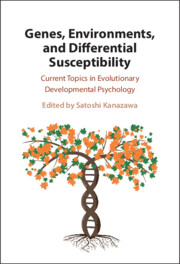 Genes, Environments, and Differential Susceptibility
Genes, Environments, and Differential Susceptibility Book contents
- Genes, Environments, and Differential Susceptibility
- Genes, Environments, and Differential Susceptibility
- Copyright page
- Contents
- Figures
- Tables
- Contributors
- Introduction
- Part I Historical Background and Theoretical Foundations of Jay Belsky’s Work in Evolutionary Developmental Psychology
- Part II Parent–Child Relations and Attachment
- Chapter 4 Evolutionary Lifespan Models of Attachment and Reproductive Strategies
- Chapter 5 Stability and Change in Attachment from Preschool to Adolescence
- Chapter 6 The Legacy of the Determinants of Parenting Process Model
- Part III Life-Course Development from Prenatal Environment through Childhood to Adulthood
- Part IV Differential Susceptibility to Environmental Influences
- Conclusion
- Afterword
- Biography of Jay Belsky
- Index
- References
Chapter 6 - The Legacy of the Determinants of Parenting Process Model
from Part II - Parent–Child Relations and Attachment
Published online by Cambridge University Press: 04 September 2025
- Genes, Environments, and Differential Susceptibility
- Genes, Environments, and Differential Susceptibility
- Copyright page
- Contents
- Figures
- Tables
- Contributors
- Introduction
- Part I Historical Background and Theoretical Foundations of Jay Belsky’s Work in Evolutionary Developmental Psychology
- Part II Parent–Child Relations and Attachment
- Chapter 4 Evolutionary Lifespan Models of Attachment and Reproductive Strategies
- Chapter 5 Stability and Change in Attachment from Preschool to Adolescence
- Chapter 6 The Legacy of the Determinants of Parenting Process Model
- Part III Life-Course Development from Prenatal Environment through Childhood to Adulthood
- Part IV Differential Susceptibility to Environmental Influences
- Conclusion
- Afterword
- Biography of Jay Belsky
- Index
- References
Summary
Jay Belsky’s Determinants of Parenting: A Process Model, published in 1984 in the journal Child Development, identified three sets of factors that account for individual differences in parenting practices, including parent personality traits, child characteristics, and the broader social context. I describe the model’s novelty and its legacy in terms of reshaping research on parenting and child development. The model was novel in shifting the focus in mainstream research on child development from the consequences of parenting – the domain of socialization researchers – to the precursors of parenting and in articulating a developmental model of parenting that emphasized the role of childhood experiences on adult parenting practices. I claim that the determinants of parenting process model reshaped the literature on parenting in at least four ways: by (1) focusing attention on parenting as an outcome of development, (2) focusing attention on fathers, (3) focusing attention on social contextual factors beyond the family, and (4) inspiring research on the biological determinants of parenting.
Information
- Type
- Chapter
- Information
- Genes, Environments, and Differential SusceptibilityCurrent Topics in Evolutionary Developmental Psychology, pp. 134 - 152Publisher: Cambridge University PressPrint publication year: 2025
References
Accessibility standard: WCAG 2.0 A
Why this information is here
This section outlines the accessibility features of this content - including support for screen readers, full keyboard navigation and high-contrast display options. This may not be relevant for you.Accessibility Information
Content Navigation
Allows you to navigate directly to chapters, sections, or non‐text items through a linked table of contents, reducing the need for extensive scrolling.
Provides an interactive index, letting you go straight to where a term or subject appears in the text without manual searching.
Reading Order & Textual Equivalents
You will encounter all content (including footnotes, captions, etc.) in a clear, sequential flow, making it easier to follow with assistive tools like screen readers.
You get concise descriptions (for images, charts, or media clips), ensuring you do not miss crucial information when visual or audio elements are not accessible.
You get more than just short alt text: you have comprehensive text equivalents, transcripts, captions, or audio descriptions for substantial non‐text content, which is especially helpful for complex visuals or multimedia.
Visual Accessibility
You will still understand key ideas or prompts without relying solely on colour, which is especially helpful if you have colour vision deficiencies.
You benefit from high‐contrast text, which improves legibility if you have low vision or if you are reading in less‐than‐ideal lighting conditions.